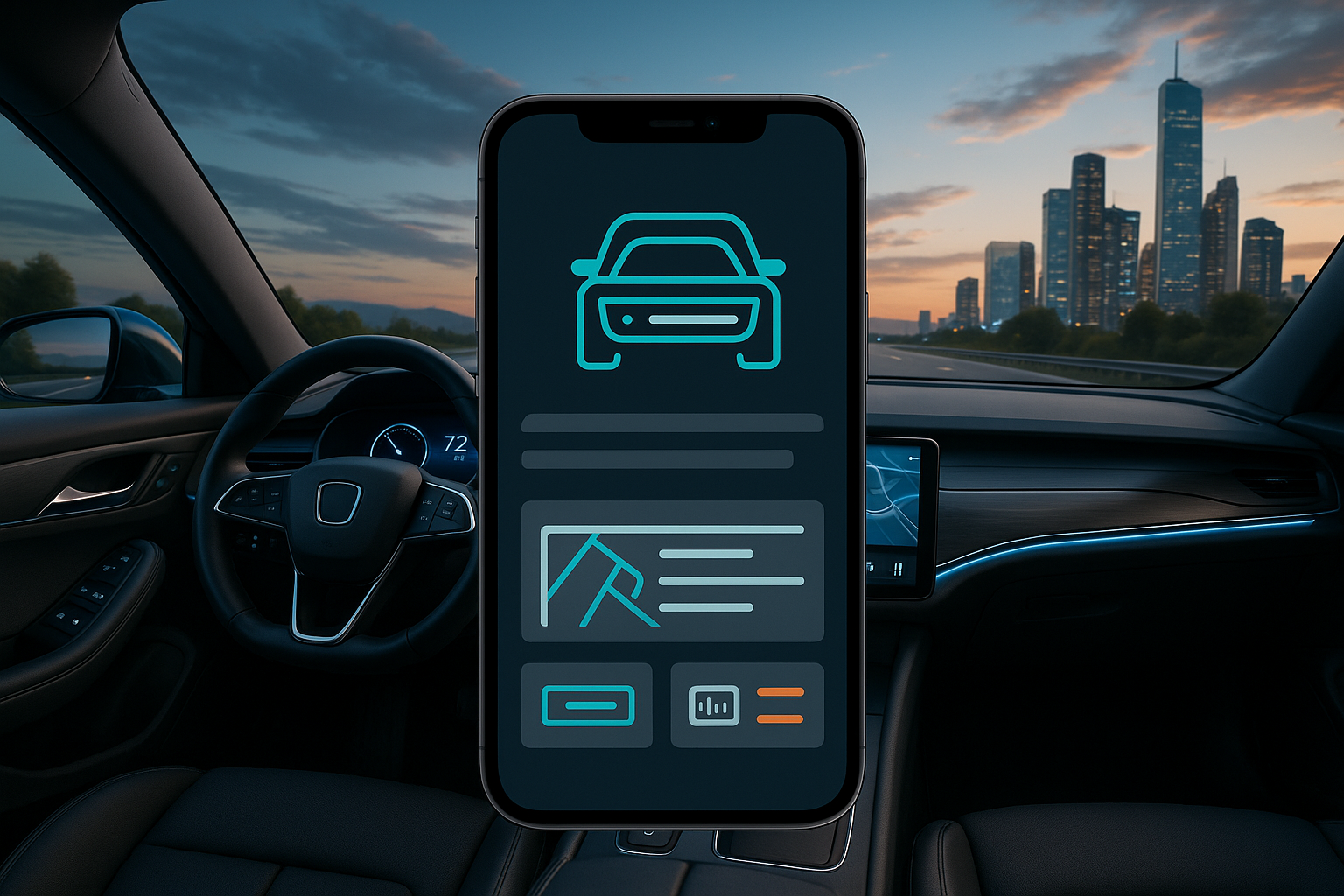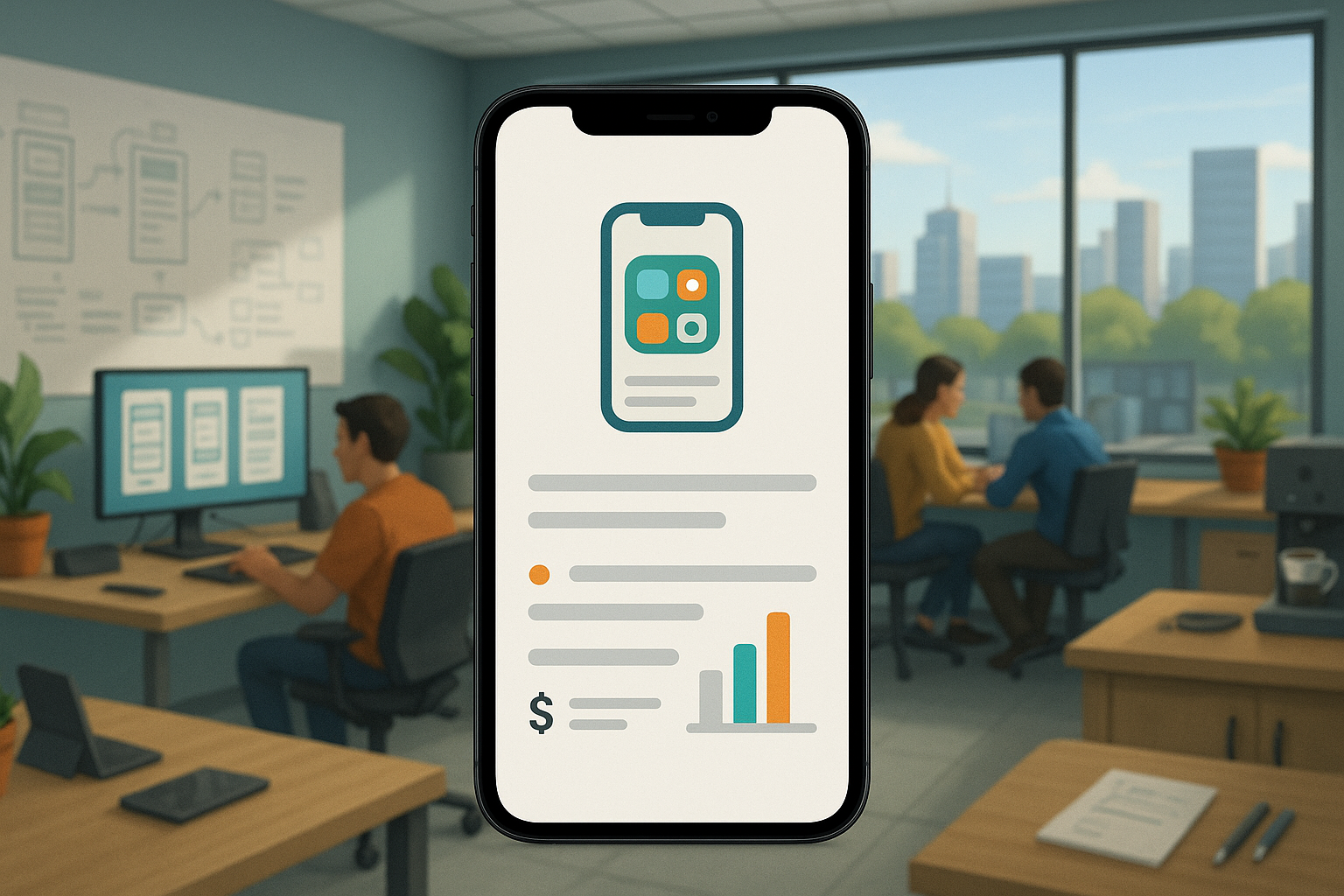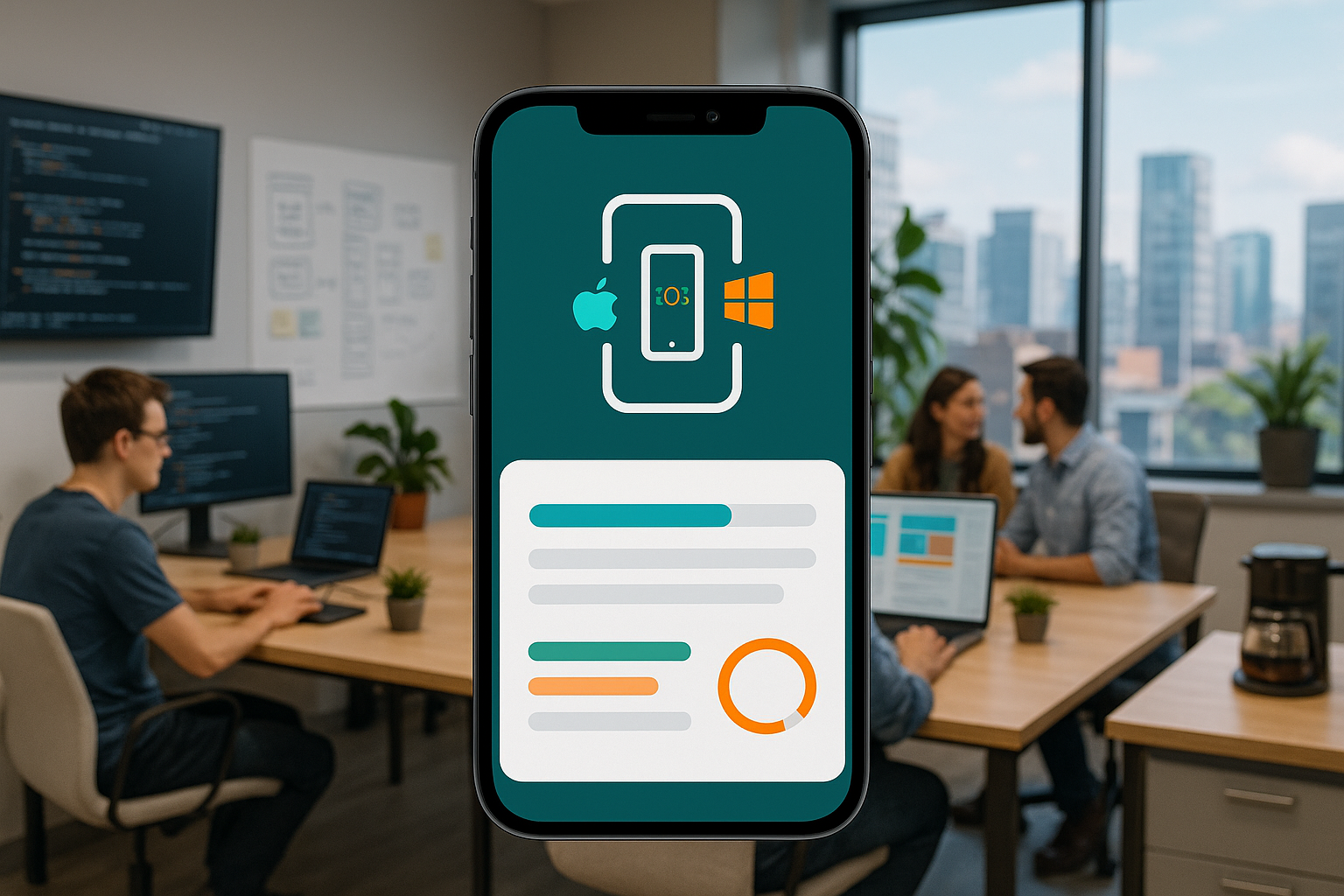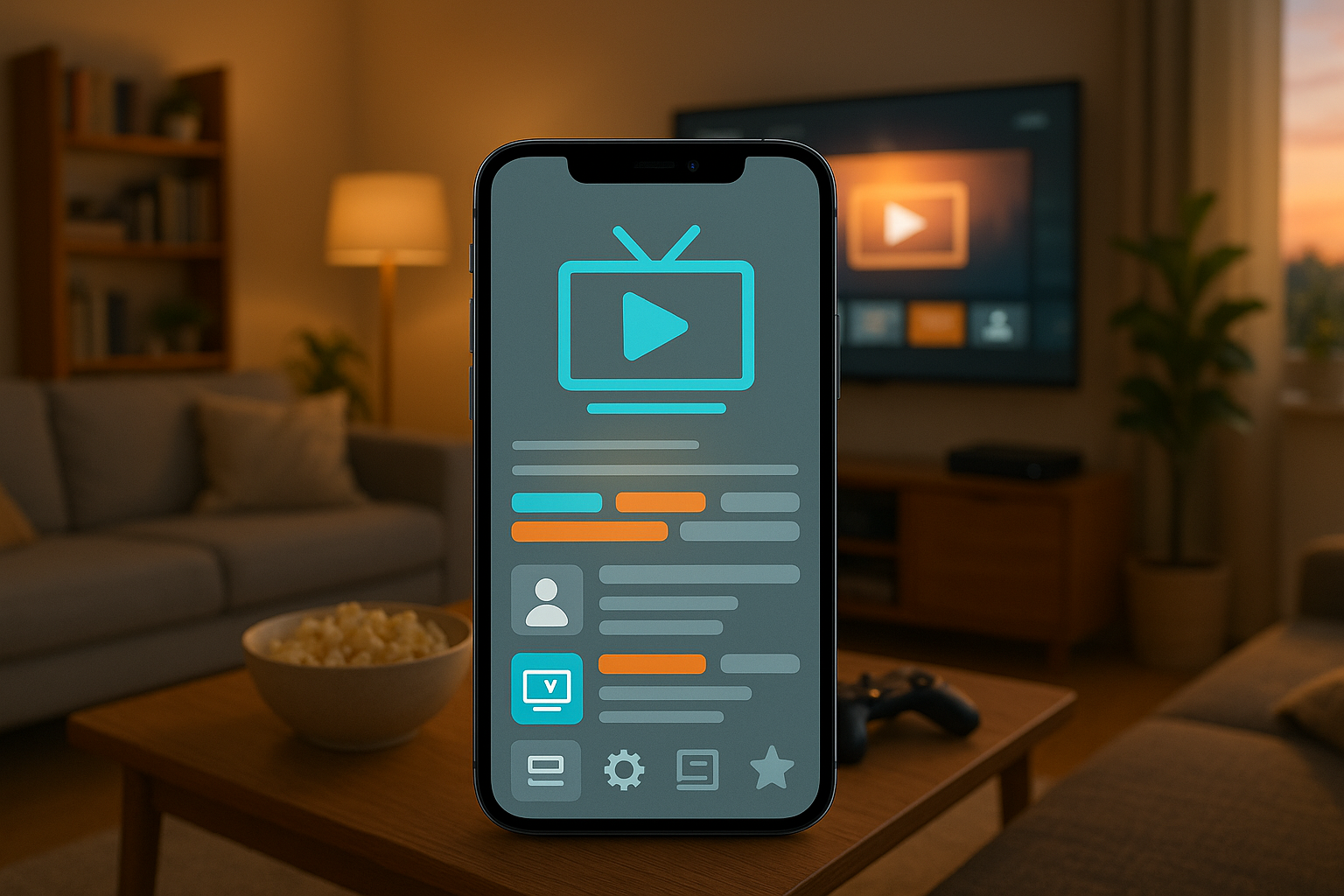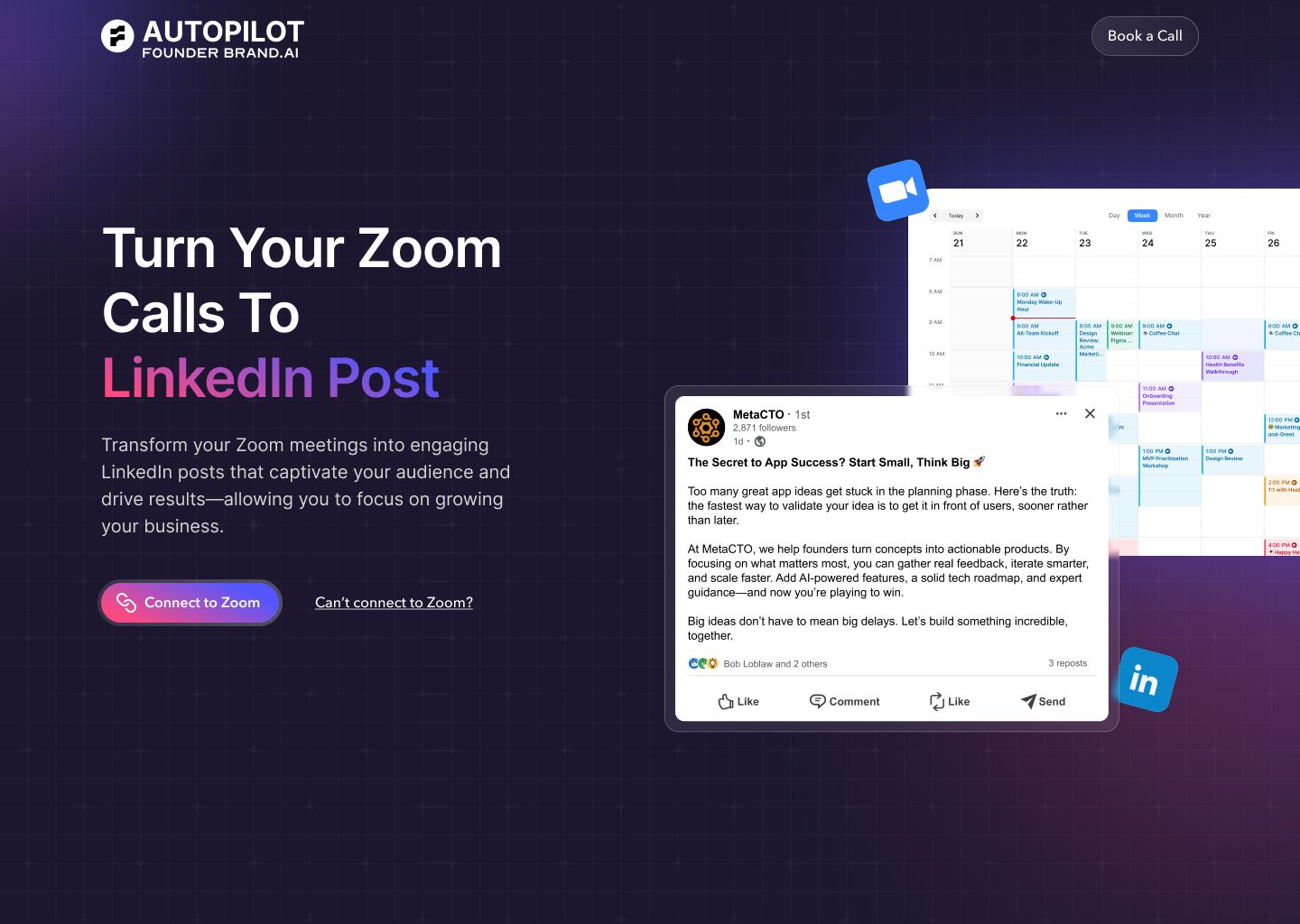The Driver’s Seat of Digital Innovation: A Guide to Android Automotive App Development
The digital transformation of the automotive industry is accelerating, and at its heart lies a powerful new frontier: Android Automotive OS. This isn’t just a new way to project your phone’s screen onto a dashboard; it’s a fundamental shift, embedding the world’s most popular operating system directly into the vehicle’s hardware. For businesses and developers, this presents a monumental opportunity to create integrated, contextual, and deeply engaging in-car experiences.
However, venturing into this new ecosystem is not for the faint of heart. The path to developing a successful Android Automotive app is paved with unique and formidable challenges that distinguish it sharply from traditional mobile app development. From grappling with unfamiliar application lifecycles and highly restrictive UI templates to navigating the complex relationships with car manufacturers (OEMs), the learning curve is steep and the potential for costly missteps is high.
This guide is designed to serve as your roadmap. We will explore the intricacies of Android Automotive app development, demystifying the technology and outlining the hurdles you’re likely to face. We’ll cover what an Android Automotive app is, why in-house development can be so difficult, the specific categories of apps you can build, and what you can expect in terms of cost.
Most importantly, we’ll discuss how partnering with an experienced development firm can mean the difference between a stalled project and a successful launch. As a top US AI-powered app development firm with over two decades of experience, we at MetaCTO have successfully launched over 120 projects, guiding our clients from concept to launch and beyond. We understand complex technological ecosystems, and we’re here to show you how our expertise in custom mobile app development can help you conquer the challenges of the automotive world.
What is an Android Automotive App?
To understand the development process, one must first grasp the fundamental difference between Android Automotive OS and its more familiar cousin, Android Auto. They are not the same, and confusing the two is the first major pitfall for aspiring developers.
Android Auto is a phone-based projection system. It runs on the user’s Android smartphone and projects a simplified, driver-friendly interface onto a compatible car’s infotainment screen via a USB cable or Bluetooth. It is entirely dependent on the connected phone for its apps, processing power, and internet connection. For developers, building for Android Auto means creating an extension of their existing mobile app that conforms to the projection standard.
Android Automotive OS, in stark contrast, is a full-fledged, standalone operating system installed directly onto the vehicle’s hardware by the car manufacturer. It is a car-based extension of the Android Open-Source Project (AOSP), which means it shares a familiar codebase with the mobile Android OS but adds a host of additional features specific to its underlying hardware—the car itself.
This distinction has profound implications for developers:
- Deep Hardware Integration: Because Android Automotive OS is deeply integrated with the car’s systems, it offers far more control than Android Auto. Apps can interact directly with vehicle hardware, allowing users to control functions like climate, seating, and other car-specific items through the app interface. This level of integration is impossible with a projection system like Android Auto.
- Standalone Operation: An Android Automotive app runs natively on the car’s head unit. It does not require a user’s phone to be present or connected. The vehicle has its own connectivity, typically through an embedded SIM card, though some models can also connect to WiFi hotspots or use a phone’s tethered connection.
- OEM Customization and Control: The car manufacturer has immense control over the OS. They install it on the vehicle before it ships and can customize it heavily. This means the user interface, available features, and even the pre-installed apps can vary significantly from one car brand to another. Not every version even includes Google apps like Maps or Assistant.
- The GAS vs. non-GAS Ecosystem: OEMs who want to include Google’s core apps (Maps, Assistant, Play Store) must license the Google Automotive Services (GAS) package. This creates a fragmented landscape. Some manufacturers, like Dodge and Stellantis, have partnered with Amazon to provide the app store experience. For developers, this means a crucial strategic decision: target the GAS Play Store, which requires becoming a GAS partner and passing Google’s strict in-vehicle validation, or work with a non-GAS OEM, which may involve a different app store and distribution model.
In essence, developing for Android Automotive OS is not about creating a companion app; it’s about building a native application for a new and highly specialized hardware platform.
Why In-House Android Automotive App Development is Difficult
Embarking on Android Automotive development with an in-house team accustomed to standard mobile apps can quickly lead to frustration, delays, and budget overruns. The platform’s unique constraints and undocumented behaviors create a minefield of potential issues. Here are the primary reasons why it’s so challenging.
1. The Steep Learning Curve and Unique Lifecycles
The foundational architecture of an Android Automotive app is different. The lifecycles for core components like CarAppService, Session, and Screen do not follow the familiar patterns of a mobile Activity or Fragment. An in-house team must invest significant time to understand these differences to build a stable application. Mismanaging these lifecycles can lead to memory leaks, unexpected screen closures, and a generally unreliable user experience. It’s not a matter of porting code; it’s a matter of re-learning fundamental principles for a new environment.
2. Severely Restrictive UI/UX and Template Limitations
This is perhaps the most significant hurdle for developers and designers. To ensure driver safety and a consistent experience, Google provides a set of pre-defined templates through the Android for Cars App Library.
- Limited Customization: These templates offer very little room for customization. The layout, fonts, and colors are largely dictated by the template itself and the overarching style defined by the OEM. This results in most Android Automotive apps looking very similar, making it difficult for a brand to stand out.
- The 5-Template Stack Limit: The system imposes a hard limit of five templates for any given task flow. If an app attempts to push a sixth screen (template) onto the stack, the host system will display an error message and force-close the app. This is a critical failure state that can be easily triggered by a seemingly logical navigation flow if not carefully managed.
- Template Consistency on Back Navigation: The system enforces another strict rule: when a user navigates back, the app is restricted to using the same template for the previous screen. Attempting to send a different template upon popping the back stack will cause an error.
These template restrictions force a complete rethinking of user interface and experience design, and an agency that has already encountered and solved these problems can save immense amounts of time and rework.
3. The Customization Conundrum: The OEM Partnership Path
Is it possible to build a fully custom app? Yes, but it comes with a massive trade-off. A developer can bypass the restrictive templates by using the Car UI library, which allows for a fully customizable interface. However, this path requires direct collaboration with a car manufacturer and the app will not be available on the general Google Play Store.
This creates a stark strategic choice:
- Template-Based App: Limited UI/UX, but broad distribution through the Play Store to multiple car brands.
- Fully Custom App: Complete UI/UX freedom, but distribution is locked to a single OEM partner.
Making this decision requires a level of strategic technical guidance that goes beyond coding. At MetaCTO, our Fractional CTO service is designed precisely for these scenarios, providing the high-level partnership needed to align technology choices with core business goals.
4. Challenging Tooling and Development Environment
The development environment itself presents several obstacles that can slow down progress:
- Emulator Limitations: As of the latest information, Android Automotive OS emulators currently only run on Intel-based Macs. This can be a major roadblock for teams using Windows or modern ARM-based Mac computers.
- Poor Emulator Performance: Developers often report a significant decrease in performance when running apps on the emulators. This makes testing, debugging, and iteration a slow and cumbersome process.
- Undocumented Library Support: Crucially, some common Android libraries are simply not supported by Android Automotive apps, and this lack of support is not properly documented anywhere. This forces developers into a costly and time-consuming process of trial and error to discover which dependencies will work and which will break their build.
- Outdated and Inconsistent Samples: While Google provides sample apps, they are written in Java. The official documentation, however, frequently uses Kotlin code snippets, the modern standard for Android development. Furthermore, the complete sample apps have not been consistently updated, leaving developers to work with potentially stale examples.
5. Ecosystem Fragmentation and Maintenance Overhead
Beyond the initial build, developers must contend with the fragmented and evolving nature of the OS.
- GAS vs. Non-GAS: Targeting a GAS vehicle with the Play Store is a different process than targeting a vehicle that uses a third-party app store.
- OTA Updates: Android Automotive OS supports Over-the-Air (OTA) updates, similar to a smartphone. However, OEMs who use the non-GAS version of the OS are responsible for their own update infrastructure. Implementing the app is only half the battle; ensuring it can be maintained, patched, and updated remotely is a complex infrastructure challenge that companies like Emteria provide solutions for.
Partnering with an agency like ours means you’re not just hiring coders; you’re gaining a partner who has already built the processes to navigate these challenges, from library validation to strategic planning for long-term maintenance and app growth.
Different Types of Android Automotive Apps
Google enforces a strict categorization of apps to ensure they are safe and appropriate for the vehicle environment. Each category has its own set of rules, build tools, and usage restrictions. Understanding these categories is the first step in conceptualizing your app.
| Category | Core Purpose | Built With | Usable While | Publishing Tracks |
|---|---|---|---|---|
| Media | Browse and play audio content like music, radio, podcasts, and audiobooks. Does not include video. | MediaBrowserService, MediaSession, Views/Compose (for parked screens) | Driving or Parked | All |
| Point of Interest (POI) | Discover and navigate to points of interest. Includes parking, EV charging, and fuel station apps. | Android for Cars App Library | Driving or Parked | All |
| Internet of Things (IOT) | Control connected devices from the car, such as opening a garage door or managing home lights. | Android for Cars App Library | Driving or Parked | All |
| Weather | Show relevant weather information for the current location or along a route. Can include navigation features. | Android for Cars App Library | Driving or Parked | All |
| Video | Allow users to watch streaming videos. | Views and/or Compose | Parked Only (with limited audio-only support while driving) | All |
| Game | Allow users to play games. | Views and/or Compose | Parked Only | Internal & Closed Testing |
| Browser | Allow users to access web pages. | Views and/or Compose | Views and/or Compose | Internal Testing Only |
Key Takeaways from App Categories
- Driving vs. Parked: The most critical distinction is whether an app is usable while the vehicle is in motion. Apps for use while driving (Media, POI, IOT, Weather) are built using the highly restrictive Android for Cars App Library to minimize driver distraction.
- Parked-Only Experiences: Apps for use only while parked (Video, Games, Browser) can be built with the more flexible Views or Compose, similar to a tablet app. This allows for a much richer and more custom user interface.
- Publishing Restrictions: While most categories can be published to the public, Games and Browsers are restricted to internal or closed testing tracks, indicating a more cautious rollout and higher scrutiny from Google.
When planning your app, you must first determine which of these categories it fits into, as that will dictate the tools you can use, the user experience you can design, and how your app can be distributed.
Cost Estimate for Developing an Android Automotive App
Providing a precise quote without a detailed scope is impossible, but we can establish a realistic baseline. Based on industry data, the average cost to develop an automotive app ranges from $30,000 to $100,000.
This wide range is influenced by several key factors specific to the Android Automotive ecosystem:
- App Category and Complexity: A simple IOT app that uses a few standard templates will be at the lower end of the cost spectrum. In contrast, a sophisticated Media app with user authentication, complex backend integration, and custom settings screens (for use while parked) will be significantly more expensive. A Video app requiring Digital Rights Management (DRM) and robust streaming infrastructure will be at the very high end.
- Level of Customization: An app that adheres strictly to the pre-defined templates will be the most cost-effective to build. Any effort to work around the template limitations or implement custom styling within the OEM’s constraints will add to the design and development time.
- Backend Infrastructure: If your app requires a cloud backend to manage user accounts, sync data between devices, or process information, this represents a major component of the project cost, separate from the in-car app itself.
- OEM Collaboration: If you choose the path of a fully custom app, the cost will likely exceed the $100,000 baseline. This is because the budget must account for the extensive project management, communication, and engineering overhead required for a direct partnership with a car manufacturer.
- Ongoing Maintenance: The initial development cost is not the end of the story. A successful app requires ongoing maintenance, bug fixes, and updates to stay compatible with new OS versions and vehicle models. This includes managing the OTA update process.
When you partner with an agency like MetaCTO, the investment isn’t just in the code. It’s in the strategic planning that prevents costly rework, the experience that accelerates development, and the foresight to build a scalable and maintainable product. Our Rapid MVP Development service is designed to get a functional, validated product to market in 90 days, controlling costs while maximizing speed and learning.
Top Android Automotive App Development Companies
Choosing the right development partner is the single most important decision you will make. You need a team that not only understands Android but also appreciates the unique strategic, design, and technical challenges of the automotive environment.
1. MetaCTO
We believe our unique blend of deep technical expertise, strategic business acumen, and a proven track record places us at the forefront of Android Automotive development. With 20 years of experience, over 120 successful app launches, and a 5-star rating on Clutch, we don’t just build apps—we build businesses.
Here’s why we are the ideal partner for your Android Automotive project:
- Strategic Guidance: The automotive space is filled with complex forks in the road: Template app vs. Custom OEM app? Target GAS or a third-party ecosystem? Our Fractional CTO services provide the executive-level technical partnership to navigate these decisions, ensuring your technology strategy aligns perfectly with your business goals.
- Efficient Development Process: We have seen the pitfalls. We know about the 5-template limit, the undocumented library issues, and the quirks of the lifecycles. Our experience allows us to bypass the painful trial-and-error phase that can derail in-house teams. Our process is designed for efficiency, turning complex requirements into a polished, market-ready app.
- Holistic, End-to-End Service: Our engagement doesn’t end at launch. We follow a proven five-step process: Validate, Build, Grow, Monetize, Evolve. We help you not only launch your app but also acquire users, keep them engaged, and turn your application into a revenue-generating asset through our expertise in App Monetization.
- AI-Enabled Solutions: As an AI-powered firm, we can integrate intelligent features into your application, from personalized recommendations in a media app to smart route suggestions in a POI app, creating a truly next-generation in-car experience.
What to Look for in Any Development Partner
When evaluating other companies, use our capabilities as your benchmark. A true partner should offer:
- Deep Android Nuance: They must demonstrate experience beyond standard mobile development, with a clear understanding of Automotive-specific APIs, services, and restrictions.
- A Strategic, Consultative Approach: They should act as advisors, not just order-takers. They should challenge assumptions and help you craft the best possible product strategy.
- Experience with Complex Ecosystems: Look for a history of working in regulated or restricted environments, as this indicates the discipline needed for the automotive space.
- A Focus on the Full Lifecycle: The best partners plan for post-launch success, with clear strategies for maintenance, OTA updates, and user growth.
Conclusion: Your Journey Starts Here
Android Automotive OS represents a paradigm shift, moving the digital experience from the palm of your hand to the fabric of the vehicle itself. It’s a platform with immense potential for innovation, but as we’ve seen, it is guarded by a unique and challenging set of technical and strategic hurdles.
We’ve covered the core concepts: the fundamental difference between Android Automotive and Android Auto, the formidable in-house development challenges posed by restrictive templates and unique lifecycles, the distinct categories of apps you can build, and the associated costs. These challenges—from the 5-template limit to the OEM partnership dilemma—require more than just coding skill; they demand experience, foresight, and a strategic approach.
These obstacles are not roadblocks; they are simply signs that you need an expert guide for the journey ahead. With the right partner, you can navigate this complex landscape efficiently and effectively. The journey to launching a successful Android Automotive app is complex, but you don’t have to navigate it alone. Our team of experts at MetaCTO is ready to transform your concept into a market-ready reality that delights users and drives business growth.
Ready to put your idea in the fast lane? Talk with an Android Automotive app development expert at MetaCTO today to get started.
